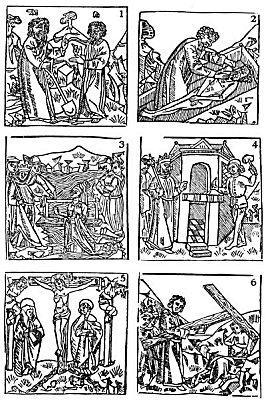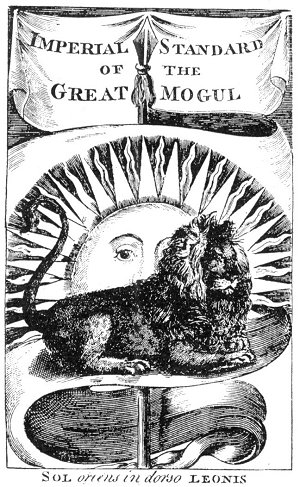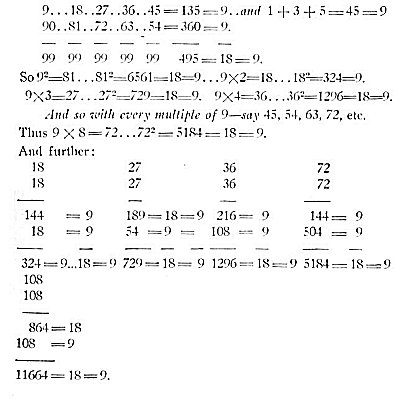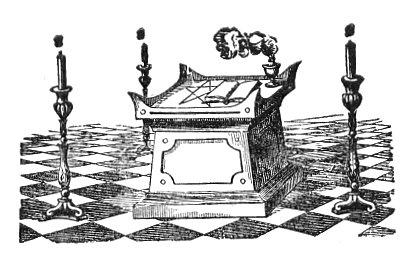“In the first decan of the Virgin rises a maid, called in Arabic Aderenosa [Adha-nari?], that is, pure immaculate virgin, graceful in person, charming in countenance, modest in habit, with loosened hair, holding in her hands two ears of wheat, sitting upon an embroidered throne, nursing a boy, and rightly feeding him in the place called Hebraea; a boy, I say, named Iessus by certain nations, which signifies Issa, whom they also call Christ in Greek.”
At this time Grecian, Asiatic, and Egyptian ideas had undergone a remarkable transformation. The Mysteries of Dionysus-Sabazius had been replaced by the rites of Mithras, whose “caves” superseded the crypts of the former god, from Babylon to Britain. Serapis, or Sri-Apa, from Pontus, had usurped the place of Osiris. The king of Eastern Hindustan, Asoka, had embraced the religion of Siddhartha, and sent missionaries clear to Greece, Asia, Syria, and Egypt, to promulgate the evangel of wisdom. The Essenes of Judea and Arabia, the Therapeutists of Egypt, and the Pythagorists of Greece and Magna Graecia, were evidently religionists of the new faith. The legends of Gautama superseded the myths of Horus, Anubis, Adonis, Atys, and Bacchus. These were wrought anew into the Mysteries and Gospels, and to them we owe the
Page 492
literature known as the Evangelists and the Apocryphal New Testament. They were kept by the Ebionites, Nazarenes, and other sects as sacred books, which they might “show only to the wise”; and were so preserved till the overshadowing influence of the Roman ecclesiastical polity was able to wrest them from those who kept them.
At the time that the high-priest Hilkiah is said to have found the Book of the Law, the Hindu Puranas (Scriptures) were known to the Assyrians. These last had for many centuries held dominion from the Hellespont to the Indus, and probably crowded the Aryans out of Bactriana into the Punjab. The Book of the Law seems to have been a purana. “The learned Brahmans,” says Sir William Jones, “pretend that five conditions are requisite to constitute a real purana:
“1. To treat of the creation of matter in general.
“2. To treat of the creation or production of secondary material and spiritual beings.
“3. To give a chronological abridgment of the great periods of time.
“4. To give a genealogical abridgment of the principal families that reigned over the country.
“5. Lastly, to give the history of some great man in particular.”
It is pretty certain that whoever wrote the Pentateuch had this plan before him, as well as those who wrote the New Testament had become thoroughly well acquainted with Buddhistic ritualistic worship, legends and doctrines, through the Buddhist missionaries who were many in those days in Palestine and Greece.
But “no Devil, no Christ.” This is the basic dogma of the Church. We must hunt the two together. There is a mysterious connection between the two, more close than perhaps is suspected, amounting to identity. If we collect together the mythical sons of God, all of whom were regarded as “first-begotten,” they will be found dovetailing together and blending in this dual character. Adam Kadmon bifurcates from the spiritual conceptive wisdom into the creative one, which evolves matter. The Adam made from dust is both son of God and Satan; and the latter is also a son of God, according to Job.
Hercules was likewise “the First-Begotten.” He is also Bel, Baal, and Bal, and therefore Siva, the Destroyer. Bacchus was styled by Euripides, “Bacchus, the Son of God.” As a child, Bacchus, like the Jesus of the Apocryphal Gospels, was greatly dreaded. He is described as benevolent to mankind; nevertheless he was merciless in punishing whomever failed of respect to his worship. Pentheus, the son of Cad-
Page 493
mus and Hermione, was, like the son of Rabbi Hannon, destroyed for his want of piety.
The allegory of Job, which has been already cited, if correctly understood, will give the key to this whole matter of the Devil, his nature and office; and will substantiate our declarations. Let no pious individual take exception to this designation of allegory. Myth was the favorite and universal method of teaching in archaic times. Paul, writing to the Corinthians, declared that the entire story of Moses and the Israelites was typical;and in his Epistle to the Galatians, asserted that the whole story of Abraham, his two wives, and their sons was an allegory.Indeed, it is a theory amounting to certitude, that the historical books of the Old Testament were of the same character. We take no extraordinary liberty with the Book of Job when we give it the same designation which Paul gave the stories of Abraham and Moses.

Moe is the founder of GnosticWarrior.com. He is a father, husband, author, martial arts black belt, and an expert in Gnosticism, the occult, and esotericism.





